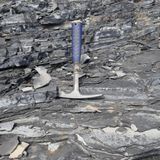RECENT ARTICLES

'A bad time to be alive': Study links ocean deoxygenation to ancient die-off
In a new study, Stanford researchers have strongly bolstered the theory that a lack of oxygen in Earth's oceans contributed to a devastating die-off approximately 444 million years ago. The new results further indicate that these anoxic (little- to no-oxygen) conditions lasted over 3 million years - significantly longer than similar biodiversity-crushing spells in our planet's history.Beyond deepening understandings of ancient mass extinction events, the findings have relevance for today: Global climate change is contributing to declining oxygen levels in the open ocean and coastal waters,...…In a new study, Stanford researchers have strongly bolstered the theory that a lack of oxygen in Earth's oceans contributed to a devastating die-off approximately 444 million years ago. The new results further indicate that these anoxic (little- to no-oxygen) conditions lasted over 3 million years - significantly longer than similar biodiversity-crushing spells in our planet's history.Beyond deepening understandings of ancient mass extinction events, the findings have relevance for today: Global climate change is contributing to declining oxygen levels in the open ocean and coastal waters,...WW…

Promising signs for Perseverance rover in its quest for past Martian life
New research indicates river delta deposits within Mars’ Jezero crater – the destination of NASA’ Perseverance rover on the Red Planet – formed over time scales that promoted habitability and enhanced preservation of evidence.Undulating streaks of land visible from space reveal rivers once coursed across the Martian surface – but for how long did the water flow? Enough time to record evidence of ancient life, according to a new Stanford study.Scientists have speculated that the Jezero crater on Mars – the site of the next NASA rover mission to the Red Planet – could be a good place to look...…New research indicates river delta deposits within Mars’ Jezero crater – the destination of NASA’ Perseverance rover on the Red Planet – formed over time scales that promoted habitability and enhanced preservation of evidence.Undulating streaks of land visible from space reveal rivers once coursed across the Martian surface – but for how long did the water flow? Enough time to record evidence of ancient life, according to a new Stanford study.Scientists have speculated that the Jezero crater on Mars – the site of the next NASA rover mission to the Red Planet – could be a good place to look...WW…
- Total 2 items
- 1